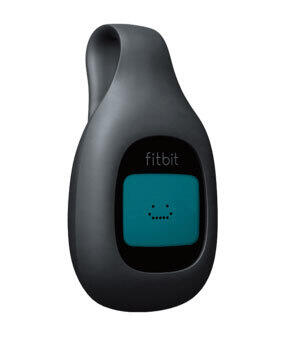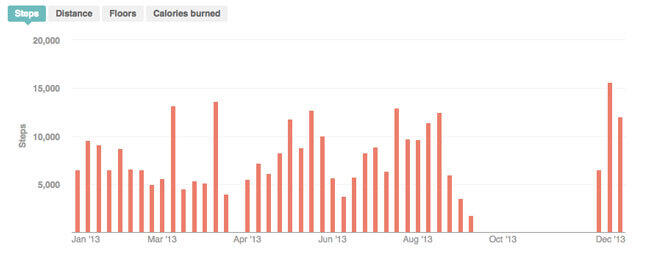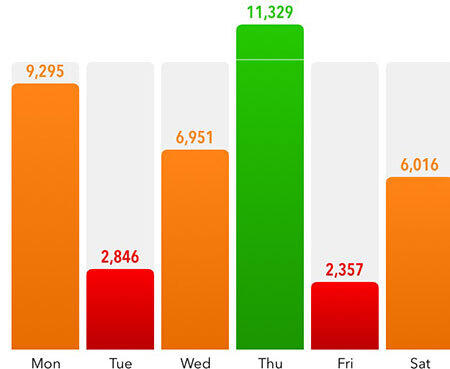
I’m an obsessive self-tracker. I track everything. But it’s also the era we live in, the era of digital traces and the age of the quantified self. Whether we know it or not, we are track things. Or, to be more precise, our devices are tracking us.
This leads to a simple question: How much of our lives can be tracked?
It’s 2016. Where do we stand on our capacity to collect meaningful, personal data? How many data points can we collect about what we do, how we move, live, etc? What areas are currently more easily tracked? What areas have emerging technologies that will allow more tracking and capturing personal data?
In a series of posts and following a more philosophical and poetic prologue on self-tracking, I’m going to look at tracking in some of the following areas: Sleep, Computer Usage, Heart Rate, Exercise, Movement, Time, Internet Usage, Podcast and Audiobook Listening, Habits/Goals/Tasks Tracking, Location, and more.
While arguably the most tracked and monitored arena of human activity is internet and app usage, it’s not talked about that much. As more of our lives intersect with the internet, it’s created a wealth of information and data about our internet behaviors. In fact, most smart home applications essentially add internet connectivity.
Before we dig into data on our internet usage and our internet, I want to start by looking at tracking our steps. For many folks, like myself, counting steps was our entry into the “Quantified Self” Movement. Essentially we suddenly had a number that we could use a measurable target for daily movement. For this first post, let’s look at the one of the most public and active area of human tracking, the pedometer.
The Early Days of Pedometers and FitBit

For me, tracking my steps started with FitBit.
In December 2012, my mom bought the whole family Fitbits for Christmas. This started a kind of family experiment. Not only were we tracking our personal steps towards our 10k daily goal but we were able to watch and “compete” against other family members. Certain family members took a more active engagement than others but overall the social gamification was the element that keep me involved initially.
I returned to Asia where I was adventuring in different cities and countries. My daily steps averaged between 7 to 13k over that year. Since I was in Asia at the time, my father had a distinct advantage due to the time different in order to compete against me each day. As midnight hit, I was locked in and he managed to edge me out on multiple occasions. We were both aiming for the 10k step goal. Ironically, like a lot of numbers, this 10k step goal is an interesting historical curiosity rather than some medically-backed data point.
In 1965, the Japanese company Y. Hatano marketed a pedemeter called 万歩計 or “manpo-kei,” which meant “10,000 steps meter” in Japanese. This name choice was about a clever sounding name brand rather than the health benefit of such a distance. But the goal stuck and, as a society, we continue to promote this 10k step goal, in spite of differing views from medical experts.
For me like a lot of other people, the FitBit was a game changer. Not only did it provide a useful little device that was always-on tracking my movement, but I could sync the results to the web. Via a smart phone or computer, I could collect and visualize my data.
This lead to nearly a year of continual step tracking:

Unfortunately my first FitBit failed as did the second. These cheap devices were fun while they lasted. But this second failure coincided with the ability of step tracking on smart phones, specifically iPhone, which is how I generally track my steps today.
Tracking Your Steps with Technology: Smart Phones, Activity Trackers, and Wearables
There are primarily three methods of tracking your steps: activity trackers like a fitbit, smart phones, and wearables.
According to this succulent definition on Wikipedia, an “activity tracker is a device or application for monitoring and tracking fitness-related metrics such as distance walked or run, calorie consumption, and in some cases heartbeat and quality of sleep.” While today it’s become synonymous with electronic tracking, activity trackers have a longer history and included some of the earliest pedometers.
![]()
The term “wearable” stands for a range of clothing and accessories that have incorporated technology. Often wearables include activity trackers but have come to include an even wider range of usages. A wearable is an internet-connected device you carry on your body. It’s a good representative of the Internet of Things (IOT).
The Fitbit is one of the first and most successful “wearables” and “activity trackers.” Its early success brought a lot of competition and similar devices like Nike Fuel Band, Jawbone, Pebble, and many others. While devices like Fitbit remain popular, its biggest threat came not from devices in its category but from smart phones.
Early on in my usage of Fitbit I would sync my data via an iPhone app. I was using an iPhone 4s at the time, and typically I’d sync my data each evening or night. Unfortunately the introduction of iPhone5s and my switch to iPhone 6 meant I was tracking my steps automatically on my smart phone. I no longer needed a wearable, an activity tracker or fitbit to track my steps. I only needed an iPhone.
Ultimately whatever device you use, tracking your steps has gotten easier and easier. Whether its a smart phone or a wearable, these devices are largely passive tools collecting data on your movements and logging it. Most wearable bands and activity trackers cost less than 50 usd.
Tracking your steps is one of the easiest things you can do. Many of us are already tracking our steps without even knowing it.
How I Track My Daily Steps and Additional Apps for Visualizing and Collecting Your Data
With my iPhone, I’m constantly tracking my steps. Assuming you carry your smart phone regularly, you have no excuse on for not tracking your steps. In fact, you might be surprised to realize how much data you’ve already tracked.
Like a lot of the health data on iPhones, this step and distance data is stored in Apple’s Health Kit, which is their aggregator of your health data. Whether its steps, floors climbed or distance, you can easily see your data from any day or hour in the past. While not the most visually clear, Apple’s Health App gives you access to your data.
Personally, I use the app “Stepz” since it provides a better visual of your step count and graphs to look at your historical step data. You can set a custom step goal to track and be notified. And, by adding the the Stepz widget, you can easily check your steps along with the weather.

One of the key aspects of self-tracking is gaining access to your data. Ultimately selecting a tool or website for me is not just about its easy of use or what it can do for me; it’s about having access to my data. In the case of Apple and its health data, it’s quite easy.
Using the QS Access app, you can get an export of your daily or hourly steps (and other data). Using your favorite spreadsheet app, you can further explore how much you move.
Conclusions: Tracking Everything: Steps
If you have a smart phone, you have no reason to not track your steps. It’s one of the easiest data points you can have on yourself. While ironically the 10,000 step rule is not based on science but instead a clever marketing name in Japanese, I’m still a believer in having measurable goals.
Daily movement is key to being healthy. Having measurable daily health goals is important. Steps may not be enough for full fitness, but walking is beneficial both physically and psychologically. Walking outside in particular is well-known factor for greater levels of happiness.
I like goals that are measurable and steps are one of the easiest to do. It’s easy to passively track with your phone or a cheap wearable like a fitbit.
While we’ve debunked the 10k rule, medical experts still recommend 7,000 steps per day. I do my best to hit that goal everyday. But instead of obsessing about that number, each day I aim to do either some form of cardiovascular exercise like running, cycling or swimming OR reaching 7,000 steps.
As we go deeper into other areas of tracking, especially internet and computer usage, this data point about steps can be helpful correlation about your productivity. Personally I’ve found that there is a balance between getting enough exercise to be focused and productivity while also avoiding the extremes of simple passive data of TV or internet usage or all day walking.
Correlating my step count with other parts of my day like mood or productivity is a challenge. Several apps and companies are attempting to find meaningful correlations of different data points. We will look at this in a later post. But for now, overall I’m much healthier and balanced when I get enough daily exercise.
I hope you enjoyed this first data point on step tracking. There are a lot more posts coming soon.
